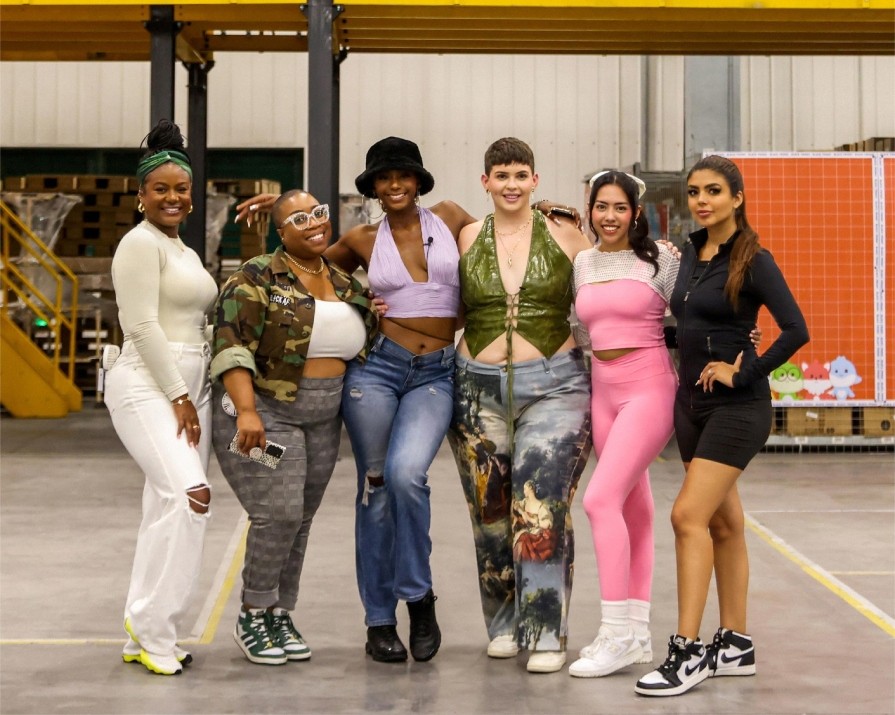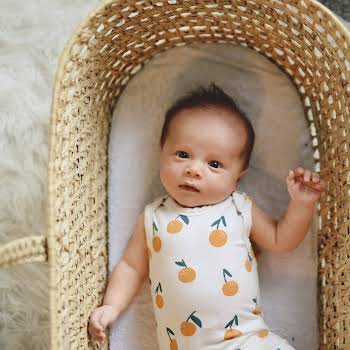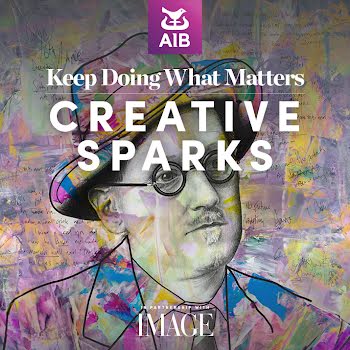By Sarah Finnan
29th Jun 2023
29th Jun 2023
Shein brought a bunch of American influencers on a brand trip to China. They posted glowing reviews of their visit online and the internet is furious. Here’s what you need to know about the Shein ‘propaganda’ trip.
If you’re in any way aware of the discourse around fast fashion brands, their treatment of workers or their environmental impacts, you’ll most likely have heard of Shein; an ultra-fast-fashion brand regularly touted as the worst of the worst in terms of, well, everything.
Pronounced “shee-in”, the company has been around for over a decade now, but it’s only recently that the site has properly taken off. Sales soared during the pandemic and last year, it even overtook Amazon to become the most downloaded shopping app in the U.S. Now the largest online-only fashion company in the world according to Euromonitor, it’s currently estimated to be valued at a whopping $64 billion.
There are many issues with Shein’s business model (ranging from working conditions to a complete lack of environmental practices – more on that here), but this week, the company has come under fire for a recent influencer trip it organised; one onlookers have more accurately described as a “propaganda trip”.
Advertisement
Clearly hoping to try and clean up its image a bit, Shein invited six American influencers – Aujené, Dani Carbonari, Destene Sudduth, Fernanda Stephany Campuzano, Kenya Freeman and Marina Saavedra – over to Guangzhou, China for a week-long press trip. The itinerary included a tour of one of the company’s factories (one of an estimated 6,000 according to Time Magazine) and a stop-off at their headquarters in Singapore.
Those invited say they weren’t paid for their attendance or for posting about it on their social media accounts. That said, each of the influencers were flown over to China business class, were put up in luxury hotels during their stay and enjoyed 10-course tasting dinners at prestigious local restaurants – all on Shein’s dime. The irony of this extravagance given Shein’s history of grossly underpaying workers, is not lost on me (or the internet at large).
Here’s why the Shein influencer trip is a problem:
First off, the influencers Shein chose for this trip were all non-white or plus-sized – a “marginalised” category of influencer offered fewer opportunities than their thin, white counterparts. Shein knew they were grateful to be included and made sure they were well looked after while in China… which feels icky, to say the least.
“It is so nice to look around the table and see women that look like me”, Sudduth said in a video posted on Shein Singapore’s Instagram account. “I’m only 21 and so the fact that I have opportunities like this is crazy,” Saavedra agreed. Aujené added, “I want to thank you Shein for bringing me on this phenomenal trip. China has been on my bucket list forever y’all. So y’all making dreams come true.”
Advertisement
It’s important to note that historically, non-white and plus-size creators have rarely been afforded the same opportunities as thin, white creators and, as per a Bloomberg article, often make much less money for the same/similar content. According to Dani, a plus-sized creator, Shein was the first company to bring her on a brand trip. She later admitted to signing a deal with Shein to help them “debunk” some of the negative rumours that have been circulating about them. “I am about 60% of the time underpaid and [Shein] have definitely not underpaid me and taken great care of me,” she said in a now-deleted TikTok.
this influencer is being dragged for her recent Shein brand trip to China, so I translated her explanation Tiktok pic.twitter.com/xjHbX7QMOn
— Franchesca Ramsey (@chescaleigh) June 25, 2023
That inevitably makes their offer all the more attractive, and despite what we know, much harder to turn down as a result. These creators’ genuine excitement at seeing underrepresented people being included and recognised by a global brand was completely exploited by Shein who used them for their own personal benefit.
SHEIN is sending the influencer girlies to China to some (PR) “innovation” factory where it looks pristine and super clean and the workers are having fun while sewing and the company saying they pay a “competitive” wage lol pic.twitter.com/Q2OAmxs8by
Advertisement
— LINDSEY ???? ? | Startup Doll (@LindseyCreated) June 23, 2023
As a woman with a degree in supply chain, the shein brand trip is so obnoxious, how do you not realize you’re in a distribution center???? They don’t make shit there. It’s like going to the grocery store and saying “wow, this is where vegetables are grown. so cool.”
— angela (@angelasdiamonds) June 26, 2023
Secondly, the videos the creators shared of their trip (many of them featuring clips from inside the factory and so-called “innovation centre”) are in stark contrast to that which we already know about Shein, their horrific working conditions and general apathy about the environmental damage they’re personally responsible for.
Advertisement
Last year, a Channel 4 documentary called Inside the Shein Machine uncovered the truth, essentially confirming what we already suspected. Hosted by investigative journalist Iman Amrani, the tell-all documentary features hidden camera footage taken from inside two of Shein’s many factories in China. Shedding light on the company’s complete exploitation of workers, the documentary details how garment makers are regularly expected to work 16 to 18-hour days with quotas of over 500 garments a day. China’s labour laws state that workers are allowed to clock in a maximum of 40 hours per week. “There’s no such thing as Sundays [at Shein],” one worker noted, later admitting that 18-hour-days are the norm and that workers only get one day off a month. The majority of workers are so exhausted that they wash their hair at lunchtime – the only “free” time they have in their demanding schedules.
At one factory, workers told Channel 4 that they’re paid an average of 4,000 yuan a month (the equivalent of approximately €530). At another factory, workers said that they didn’t have a base pay and instead earn 3p per garment they make – they’re docked 75% of their wages if any products are damaged in the process.
Shein later admitted to conducting their own independent investigation which found that employees were working longer hours than were legally permitted. The company released a statement at the time saying that although the hours were “significantly less than claimed in the documentary” they were still higher than local regulations permitted and they vowed to invest $15m (€13.7m) to improve these work environments.
According to the influencers, they were encouraged to chat with Shein workers to dispel these rumours. “I expected this facility to be filled with people slaving away. I was pleasantly surprised that most things were robotic. Everybody was just working like normal, like chill, sitting down. They weren’t even sweating,” one influencer noted in a subsequent TikTok video reviewing her experience.
In a statement to The Independent UK, Shein said that the company is “committed to transparency and this trip reflects one way in which we are listening to feedback, providing an opportunity to show a group of influencers how Shein works through a visit to our innovation centre and enabling them to share their own insights with their followers”… ironically, it’s what wasn’t said or shown that has drawn the most attention.
Advertisement
Guided through the innovation centre by a permanently smiling team of Shein employees and an ever-present camera (there to capture the trip for Shein’s social media use), the influencers toured the facility and even tried their hand at packing orders. The women were impressed by how high-tech their systems were but not everything had been robotised and some workers were also seen hand-cutting garment designs.
Last thing about the Shein propaganda brand trip, this company releases over 300,000 new designs a year and these people genuinely believe they’re pattern cutting items 1 by 1? pic.twitter.com/cC6fleoIGA
— millie (@millieadamsx) June 25, 2023
Advertisement
It’s important to point out that, unlike other retailers of its kind, Shein controls its own production chain, all the way from design and prototype to procurement and manufacturing. Each step is highly digitised thereby allowing the company to churn out thousands of new trend-driven products a day. The website averages 3,000 new styles a week – versus Boohoo which averages around 500 a week. It would be completely impossible for workers to hand-cut individual garments – something only haute couture or designer brands can afford to do – and still reach that quota.
In the creators’ videos (many of which have since been taken down), viewers also noted that there is a distinct lack of safety signage, exit signs or fire extinguishers – the Channel 4 documentary alleges that most Shein factories have barred windows and no emergency exits.
Much of the language used by the influencers is also strangely similar, which has led many to believe that they were provided with pre-prepared, Shein-approved scripts to go off of.
https://www.instagram.com/tv/Ct-TG-prC0-/?igshid=YzcxN2Q2NzY0OA%3D%3D
Admittedly, it would be easy to completely villainise the group of influencers who went on this trip, but it’s really Shein themselves we should be pointing the finger at. Surface-level investigations into the company will tell you that it’s great; they’re size inclusive (they cater up to a 4XL) and their ‘Shein cares’ hashtag will have you believe that they’re committed to all the same causes we care about too – including, but not limited to, feminism and sustainability (they launched their own resale app last year).
whataboutism is a way to avoid critique by bringing up an unrelated issue/topic. Shein sponsored a trip & fed influencers lies about their brands labor practices & environmental damage. they are not the ONLY fast fashion brand worthy of critique but they are the topic at hand
— Franchesca Ramsey (@chescaleigh) June 26, 2023
Advertisement
But, the Shein website is one built on greenwashing, exploitation and buzzwords (no, they’re not the only brand culpable of this, but they are the ones currently in the news about it). Products are made from shoddy materials that are not designed with longevity in mind; they’re barely solid enough to be worn once, which means that they’re definitely not suitable for the resale economy.
Furthermore, there is no evidence that the company has tried to enact meaningful change and this influencer trip suggests that they’d rather spend their money on audacious PR plans than actively fixing what’s wrong. Conversations around fast fashion and sustainability are incredibly nuanced given that they’re intrinsically linked with privilege, but with Shein continuously dubbed “the worst of the worst” by critics, it’s hard to condone purchasing from them… or going on a thinly-veiled propaganda trip for that matter.
Featured image via @sheinsingapore






















